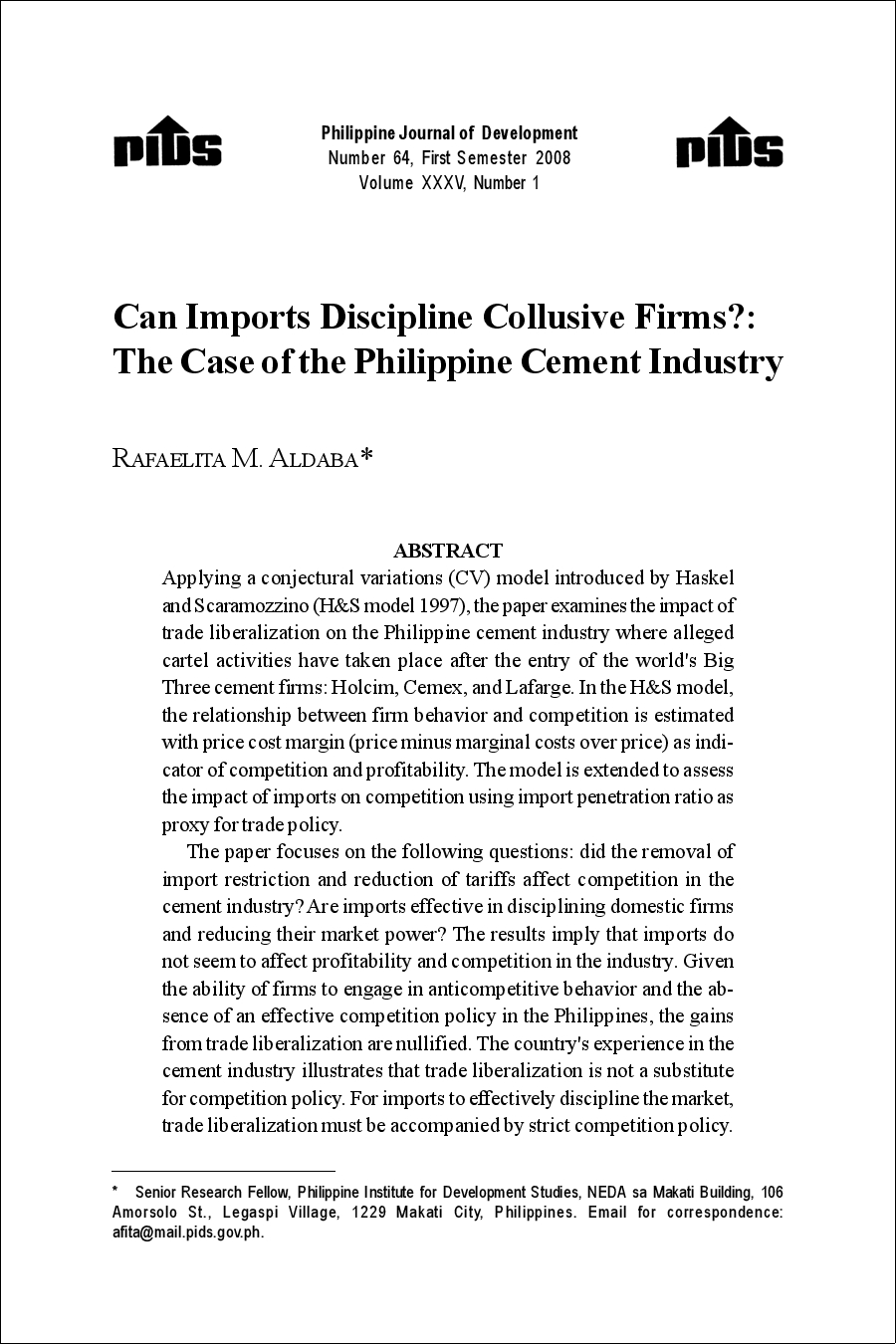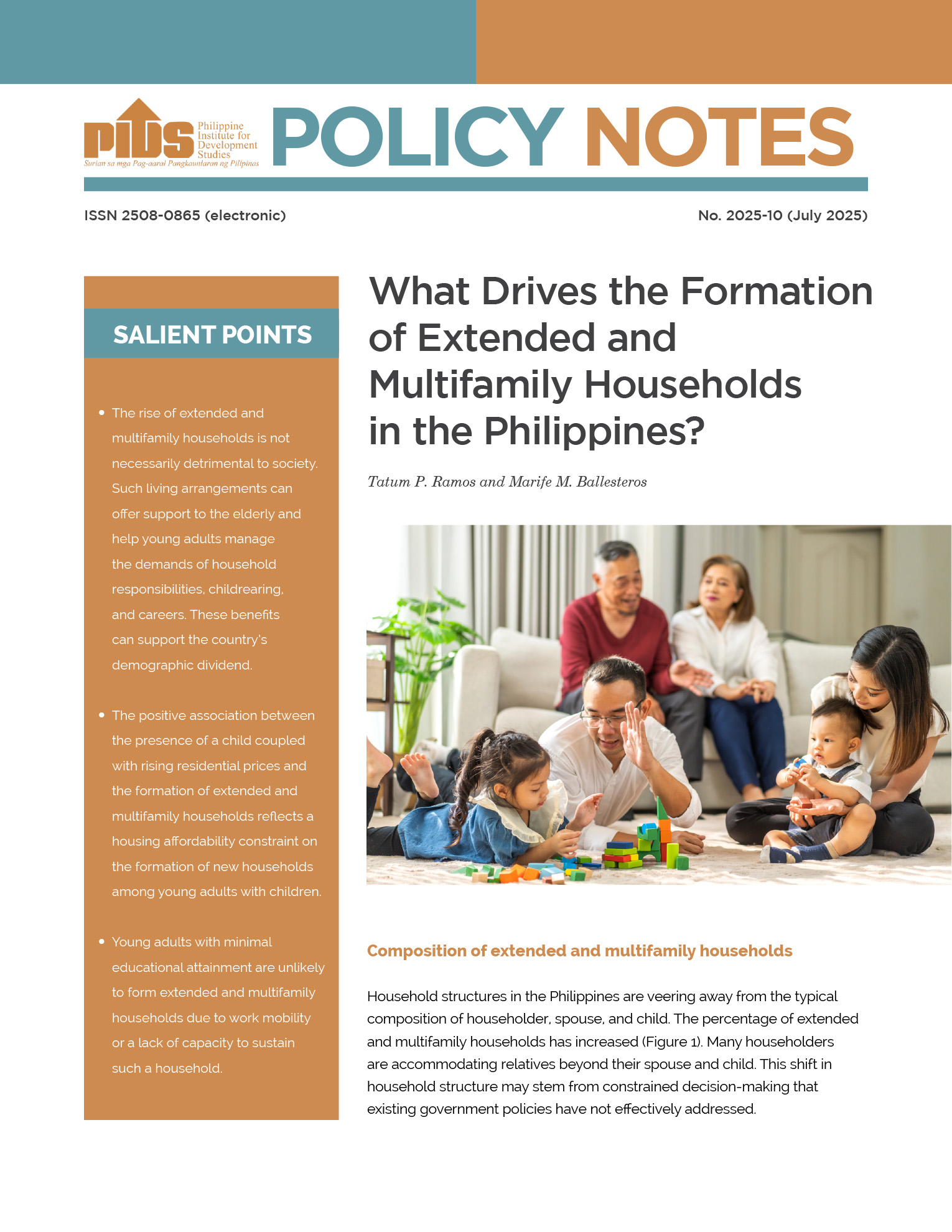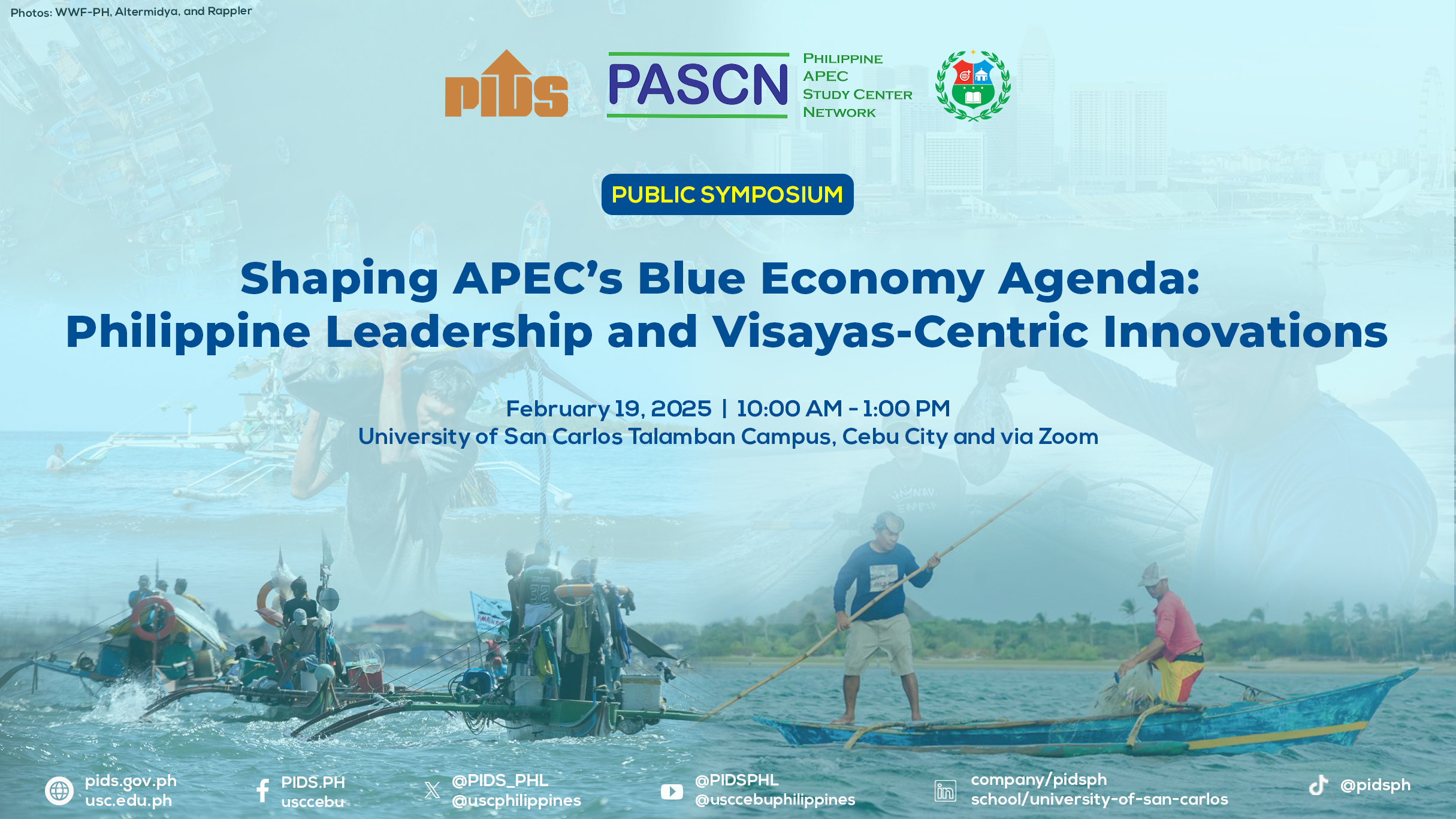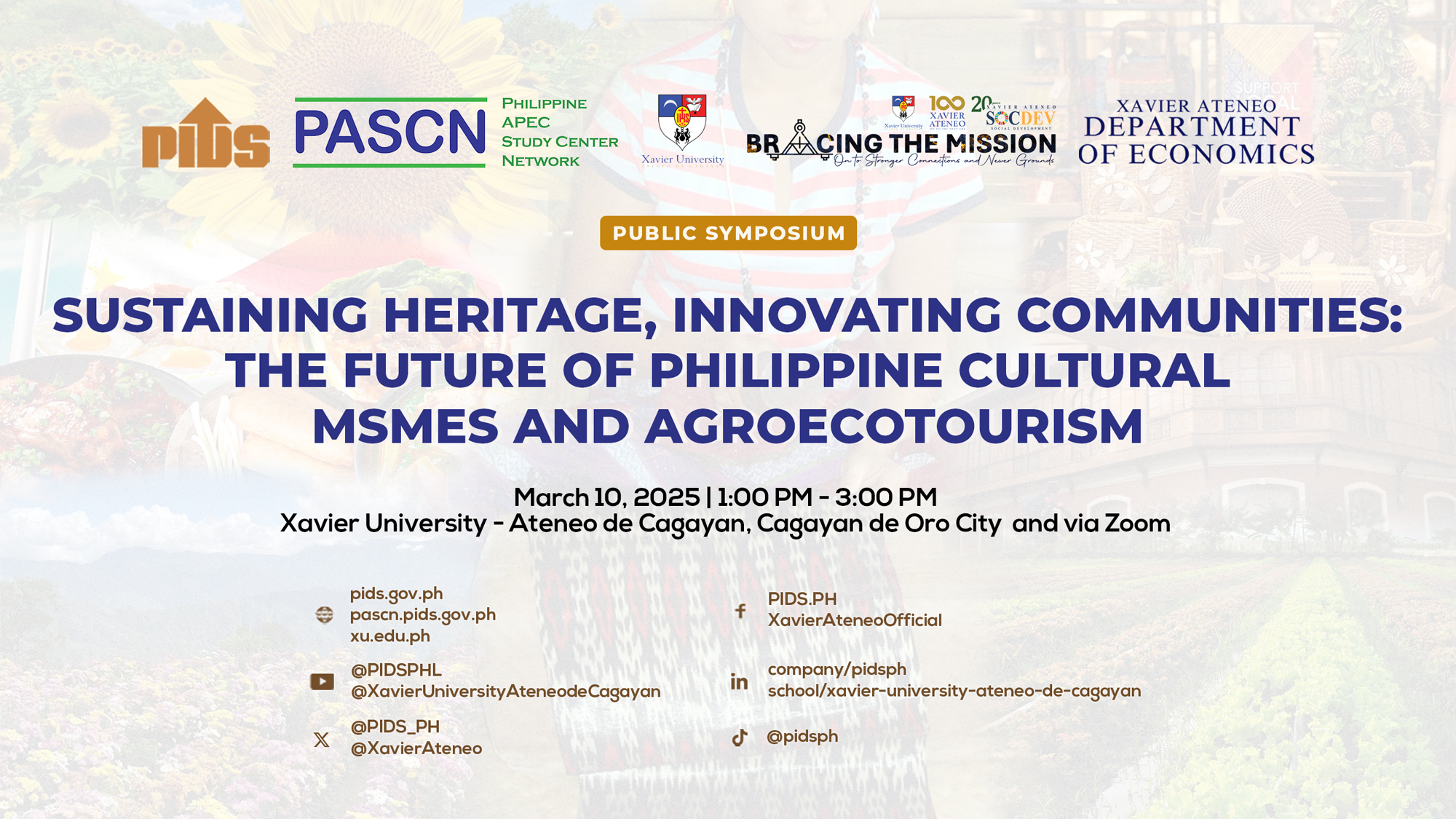Applying a conjectural variations (CV) model introduced by Haskel and Scaramozzino (H&S model 1997), the paper examines the impact of trade liberalization on the Philippine cement industry where alleged cartel activities have taken place after the entry of the world's Big Three cement firms: Holcim, Cemex, and Lafarge. In the H&S model, the relationship between firm behavior and competition is estimated with price cost margin (price minus marginal costs over price) as indicator of competition and profitability. The model is extended to assess the impact of imports on competition using import penetration ratio as proxy for trade policy. The paper focuses on the following questions: did the removal of import restriction and reduction of tariffs affect competition in the cement industry? Are imports effective in disciplining domestic firms and reducing their market power? The results imply that imports do not seem to affect profitability and competition in the industry. Given the ability of firms to engage in anticompetitive behavior and the absence of an effective competition policy in the Philippines, the gains from trade liberalization are nullified. The country's experience in the cement industry illustrates that trade liberalization is not a substitute for competition policy. For imports to effectively discipline the market, trade liberalization must be accompanied by strict competition policy.













